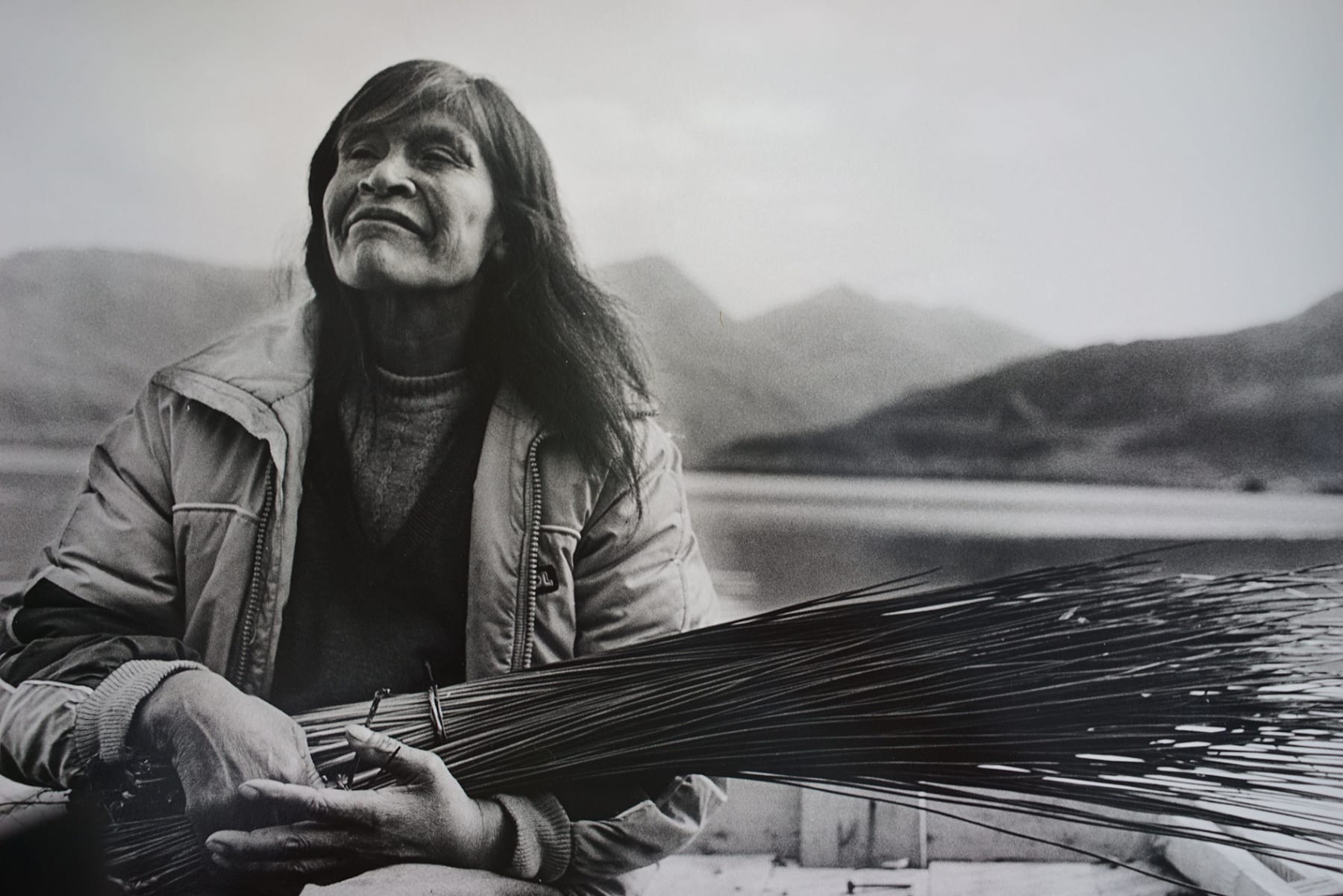-
Paz Errázuriz
Los nómades del mar, 1995/2016impressão digital sobre papel | digital print on paper60 x 90 cm | 23.62 x 35.43 ined 1/5 + 2 A.P.Podemos pensar em Paz Errázuriz como uma taxonomista social, uma artista que se aproxima, se infiltra e se funde cuidadosamente nos mundos marginalizados da sociedade, onde habitam aqueles que vivem...Podemos pensar em Paz Errázuriz como uma taxonomista social, uma artista que se aproxima, se infiltra e se funde cuidadosamente nos mundos marginalizados da sociedade, onde habitam aqueles que vivem fora das convenções sociais, como prostitutas, indígenas, pessoas com deficiências mentais, entre outros.Por meio de suas fotografias, ela torna essas pessoas presentes, a fim de questionar e aumentar a conscientização sobre a desigualdade social, os direitos humanos e o espaço público ou privado de cada uma delas.A série fotográfica Nómades del Mar a levou ao território mais ao sul do mundo onde comunidades indígenas habitavam, a Patagônia chilena. Eram grupos étnicos nômades que viviam nus, protegidos por peles de animais, pelo sol e pelo fogo, sobreviviam da coleta de mariscos e da pesca, e eram transportados pelo mar em hallef (canoas), Esses grupos étnicos são os Chonos, Changos, Onas, Yaganes e Kawéskar. Errazuriz foi conhecer os poucos Kawéskar que não foram exterminados durante o século XX. Eles tinham um profundo conhecimento da geografia que habitavam devido à sua mobilidade e, com seu extermínio, esse conhecimento e compreensão do território desapareceram.Podemos pensar en Paz Errázuriz como una taxónoma social, una artista que se acerca cuidadosamente hasta infiltrarse y fundirse dentro de los mundos relegados de la sociedad, donde habitan quienes están fuera de los convencionalismos sociales, como prostitutas, indígenas, personas con discapacidad mental, entre otros.
Por medio de su fotografía ella hace presentes a estas personas, para cuestionarnos y crear conciencia en torno a la desigualdad social, los derechos humanos y el espacio público o privado de cada uno.
La serie fotográfica Nómades del Mar, la condujo al territorio más austral del mundo donde habitaron comunidades indígenas, la Patagonia chilena. Estas eran etnias nómades que vivian desnudos abrigándose con pieles de animales, con el sol y con el fuego, sobrevivian de la recolección de mariscos y la pesca, transportándose por el mar en hallef (canoas), estas etnias son los Chonos, Changos, Onas, Yaganes y Kawéskar. Errázuriz fue al encuentro de los pocos Kawéskar que no fueron exterminados durante el siglo veinte. Ellos tenían un conocimiento profundo de la geografía que habitaban dada su movilidad, junto con su exterminio se fue también este conocimiento y entendimiento del territorio.
We can think of Paz Errázuriz as a social taxonomist: an artist who approaches, immerses herself in, and carefully fuses with the marginalized worlds of society, inhabited by those who live outside the social conventions, such as prostitutes, indigenous people, people with mental disabilities, and others.
Through her photographs, she makes these people present with the aim of posing questions and raising awareness about social inequality, human rights, and the public or private spaces they occupy.
The photographic series Nómades del Mar brought her to the southernmost territory in the world ever to be inhabited by indigenous communities – the Patagonia region of Chile. Consisting of nomadic ethnic groups, they lived exposed to the elements, protected by animal skins, by the sun and by fire, surviving through the collection of shellfish and fishing, and moving about in a sort of canoe called a hallef. These ethnic groups are the Chonos, Changos, Onas, Yaganes and Kawéskar. Errazuriz went to meet the few Kawéskar who were not exterminated during the 20th century. Due to their mobility, they had a profound knowledge of the geography in which they lived, and with their decimation this knowledge and understanding of the territory disappeared.
